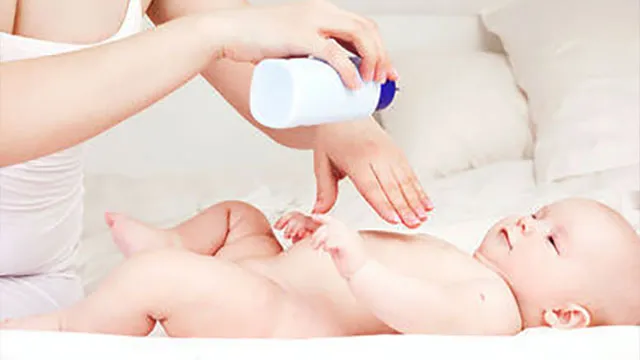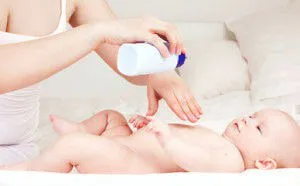
- Share on Facebook345
- Share on Pinterest
- Share on Twitter
Not only does the American Academy of Pediatrics recommend against using baby powders, but now many pediatricians are also making the same suggestion. The main issue with baby powder is talc. Most manufacturers of baby powder have removed the talc, which is a mineral composed of hydrated magnesium silicate, however, baby powders may still contain trace particles of talc, and talc is found in many other products.
Magnesium silicate is comprised of finely ground particles of stone. It originates in the ground and is a mined product, so it can be contaminated with other substances. In its raw state, talc contains asbestos.
We asked a question. How bad is this talc and is it really something to fear? Here is what we found out.
The Ecologist reports that, “since the 1970s, manufacturers have removed most of the asbestos from the talc during processing, though traces may still remain in the finished product. Industrial exposure to asbestos, of course, is linked to serious lung disease, notably asbestosis, which can lead to lung cancer.”
The problem with talc is that it is easily inhaled because the particles are so small. When inhaled, the talc can dry an infants mucous membranes and cause difficulty in breathing and even lung damage. According to the Ecologist, “since the early 1980s, records show that several thousand infants each year have died or become seriously ill following accidental inhalation of baby powder.”
According to the Environmental Working Group, “studies by the National Toxicology Panel demonstrated that cosmetic-grade talc free of asbestos is a form of magnesium silicate that can be toxic and carcinogenic.”
Leading alternative health practitioner Dr. Weil notes that, “studies have shown that talc can lead to shortness of breath and wheezing in babies and can also lead to obstruction of the airways. Some babies have developed pneumonia and some have died as a result of respiratory failure from inhaling the powder.
Cornstarch isn’t ideal either, but its particles are larger and are not as easily inhaled as talc. You should also be careful not to use either of these powders around older children or adults who have asthma because of the irritation it causes when inhaled.”
According to another leading alternative health provider, Dr. Mercola, “several studies have linked talcum powder to ovarian cancer, and given that this product is certainly not a necessity to use, it seems wise to bypass it altogether.”
What are the Studies?
The Organic Consumers Association refers to a study which found that women who used talc just once a week had a 36 percent higher risk of ovarian cancer than those who did not use talc. Everyday use boosted the risk to 46 percent. Researchers warned that particles travel to the ovaries causing an inflammatory process to take place that encourages cancer cell growth.
The American Cancer Society reports the following information:
- In 1997 a published study found that women who applied talcum powder to their external genital area or used feminine deodorant sprays had a 50 to 90 percent higher risk of ovarian cancer.
- A study done in 2000 found that there was a 40% increase in one type of ovarian cancer (invasive serous) in talc users.
- A 33 percent increase in ovarian cancer risk was found in a meta-analysis among people using talc in 2003.
- Lung damage and cancer have also been reported by workers who have breathed in talcum powder for extended durations of time.
 Not Just Baby Powder
Not Just Baby Powder
MedlinePlus tells us that talc is found in some antiseptics, certain types of baby powder and talcum powder. Talc is also a common ingredient in cosmetics such as eye-shadow, deodorants, soaps and lipsticks. Many women use talc-based products on a daily basis without knowing it. The Environmental Working Group lists over 1,900 products that contain talc, including a number of body powders.
Also in food…..
Talc is used as an anti-caking agent, and the USDA tells us that it is safe. Hmm.. what else have they said was safe? Here is a small list of some of the places talc hides in your food.
- Processed cheese
- Breakfast cereals
- Candy
- Baked goods
- Energy drinks
- Condiments
- Pudding
Wrap Up
In conclusion, our research into the use of talc has yielded many things. Of most importance, however, is for consumers to always be aware of the products they are using and the food they are eating. This is the only way that we can make informed choices about our health and the health of our families.
-The Alternative Daily
Sources:
Hollinger MA. ‘Pulmonary toxicity of inhaled and intravenous talc’ Toxicology Letters, 52:121-127, 1990.
FDA (U.S. Food and Drug Administration). 2008. EAFUS [Everything Added to Food]: A Food Additive Database. FDA Office of Food Safety and Applied Nutrition.
- Share on Facebook345
- Share on Pinterest
- Share on Twitter

